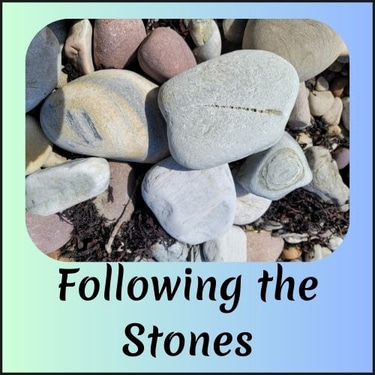A Tale of the Eagles
The Albanian People are the Shqiptaret. "Sons of the Eagles"
ALBANIA
8/14/20258 min read
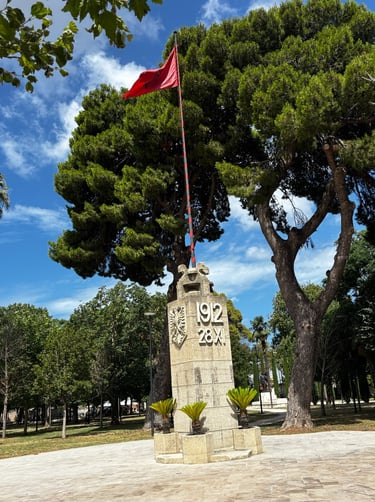

I must give the reader a lengthy preface. I have spent less than two months in Albania as a U.S. citizen and am, by no means, schooled on their history and geopolitics. After reading for a few hours total, and spending several hours in a few different museums, I can only briefly summarize the last 120 years or so.
The history of this nation is extremely complex. It is emotional and heart-wrenching. There has rarely been a period lasting more than a few decades when there wasn’t some sort of conflict either within, or from outside, waged upon it. There are still some extremely strong emotions between many Albanians and some of their neighboring countries. It is because the aforementioned reasons and more, that my “Albanian History” will only cover the most recent period, and I will do my best to stay within the confines of what I have learned from my few sources.
Depending upon the source, Albania’s roots go back several hundred years BC, and can be traced to the Illyrian tribes. Even their language is unique, and experts say its roots are unattached to any other language and are the only surviving dialect traceable to the Illyrians.
Skipping forward 2500 years or so and starting at November 28th, 1912, we find Albania signing its own Declaration of Independence from the Ottoman Empire after hundreds of years under their rule and dominance. This was after previous unsuccessful rebellions in the 1900’s were waged. Due to the weakening of the Ottomans in the Balkan region, the entire region was retaken and carved up between multiple nations. Even areas of what are currently Albanian were occupied and claimed by neighboring states. Hence, much of the animosity that still lingers in the region, which is further fueled by even more recent incursions and attempts at restructuring borders by others, were overseen by larger world powers (UK, US, Russia, Germany, Greece, and Italy) and also by smaller neighbors (the former Yugoslavia which includes Serbia, Kosovo, Macedonia and Bulgaria (with possibly others I missed).
In July of 1913, the Albanian independence was recognized by the Conference of London, which delineated the borders between Albania and the surrounding countries. The conference was presided over by the six great powers of the time (Austria-Hungary, France, Great Britain, Germany, Italy and Russia). I mention this not only out of historical reference, but to highlight how throughout history, groups of larger, more powerful nations have always determined the outcomes of smaller nations, regional conflicts, and borders, which is very pertinent to present day issues in many areas of the globe including Thailand/Cambodia, Israel/Palestine, and Nicaragua/Argentina. Just to name a few.
Because of the new boundaries in 1913, most ethnic Albanians were suddenly outside of the Albanian borders. The population was divided between Montenegro and Serbia, and what is now Kosovo and Macedonia, and then Greece to the South. Sadly, many reported atrocities against ethnic Albanians in those regions.
Albania’s fledgling nation saw the government fractured and then abandoned just prior to the onset of WWI. Without a functioning government, with internal power conflicts old and new, and with foreign influence and occupation of what is now Albanian land, she was ripe for invasion and further subjugation and division by foreign powers. WWI ended for Albania in 1918 when a multi-national force drove out the occupying Austrian-Hungarians. After WWI, U.S. President Woodrow Wilson traveled to Paris for the Peace Conference and witnessed the Great Powers attempting to divide up Albania once again. He was shocked at secret proposals to dominate and divide Albania by its neighbors once again. One of these secret agreements was the so-called Tittoni-Venizelos of 1919, when Italy and Greece agreed to take parts of Albania. President Wilson vehemently argued against this and other attempts at dividing up Albania. His stalwart opposition on the world stage, and America’s standing after WWI are acknowledged by most Albanians as having saved their national sovereignty. This is still remembered and repeated commonly when their positivity towards Americans is inquired about.
Albania’s independence and sovereignty were ruled over by a monarchy during the period between WWI and WWII. Much upheaval and some violence led to split alliances within and abroad as they were invaded by Italy in 1939. Some Albanians supported the Italians and others actively fought an insurgency throughout the war. Germany seized control and occupied areas after Italy capitulated earlier on.
Post WWII found an Albania rampant with a host of issues including poverty, overwhelming illiteracy, epidemics of disease, gross subjugation of women and blood feuds between families in some regions. But onward the people lived and survived.
1944-1991. This was the beginning of what most people would consider a very dark period in history for any nation. An era of Communism, paranoia, secret police, spying on citizens, and political prisons (with over 43,000 imprisoned and tortured and approximately 6,000 executions per the Albanian Association of Former Political Prisoners). It was also an era of growth and advancement within Albania. Some of the greatest technological and certainly educational growth took place under the banner of extreme Communism and Socialism. (They use the words interchangeably throughout their own books, statements and writings, so I shall as well.)
I read somewhere that the literacy rate in Albania prior to 1944 was around 15%, and within 25 years it was over 90%. Hospitals were built at a rapid rate. Women were allowed in the workplace and given the right to vote. Malaria, that had killed thousands, was almost eradicated. But the material and cultural gains did not offset the oppression. The stories we read, some in the very place where they happened, have been sobering and horrific. Visiting The Seven Windows Prison in Gjirokaster, The House of Leaves in Tirana, BunkArt2 in Tirana and other small memorials, statues and plaques in various places all left deep impressions on us that required long periods of silence and much discussion afterward.
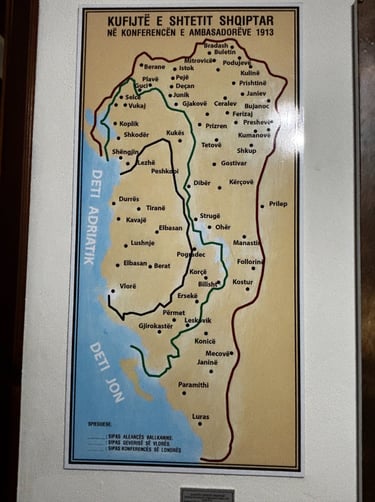

Much of this horrific history happened right up until 1990-91. People were being imprisoned, tortured, spied on, and executed up to ten years after I graduated High School in the USA and Shannon was in college. We had no clue. The world was cut off entirely from Albania and almost no one ever reported on it. The Russian “Iron Curtain” had nothing by comparison on Albania. No TV or radio from outside the country was allowed. No one could leave the country unless on official business. The nation was deemed “Atheist” by their ruler. Most churches, mosques, synagogues and temples were destroyed, and clergy members arrested if they refused to deny their faith. Dozens from each faith were tortured and executed. We read the names in one museum and saw the photos of the burning and exploding buildings. Anything deemed Western, Capitalist, or Socialist Revisionist was illegal, and had severe punishments. We heard a story of children standing guard for each other to sneak a peek at an old saxophone in a trunk hidden in an attic (Non Albanian music was illegal). We heard a story of a child finding mom’s necklace with a cross and innocently wearing it to school (illegal religious symbols) and the family fearing for their safety should someone have seen it and turned them in.
This was the period in Albanian history which was led by a paranoid dictator, Enver Hoxha, and his willing accomplices. Backed by a secret police entity known as the Sigurimi (for Westerners, think Gestapo or old school KGB), there are estimates that one in three Albanians were interrogated by the Sigurimi at some point in their life. If you are interested in dark history, The House of Leaves is where we found much shocking information. Enver Hoxha is a name that many Albanians cannot stand. In museums and some public spaces we went, pictures of his face was scribbled on or scratched off. Old memorials have been torn up and paved over, or refurbished entirely and renamed, such as the Tirana Pyramid.
Even with all the evil he implemented and oversaw, the results of a survey in 2016 which was conducted by the Institute for Development Research and Alternatives (IDRA), showed that 45% of Albanians believed that Hoxha had a positive impact on the history of Albania, whereas 42% of Albanians believed that he had a negative impact on the history of Albania(Wikipedia). It’s amazing the power of perspective when “At least everyone had jobs or work of some kind. They made crappy electronics and furniture, but they had work.” said our ATV tour guide in Vlore. Enver Hoxha died in 1985, and his successor remained in power with the Communists until 1991.
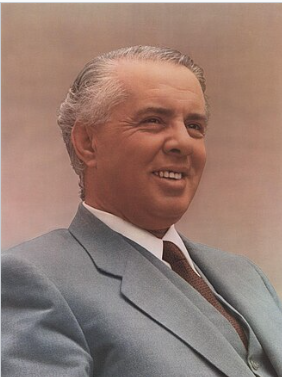

From 1991 until 1995 Albania’s government underwent transition back and forth along a spectrum. Communism, Socialism, Communism, Socialism, and then Democratic Parliamentary. They are currently a Democratic Parliament with the Socialist Party controlling by a majority.
In 1997 Albania experienced a severe financial collapse when the government endorsed pyramid schemes which caused Albanians to lose their savings and trust in the currency/banking system. United Nations troops were sent in to quell the resulting civil disorder, which resulted in over 2,000 deaths! Meanwhile in the USA, we were too busy talking about Mike Tyson biting off Evander Holyfield’s ear during their boxing match in Las Vegas to pay any attention to Albania.
Since 1997, Albania has attempted to move ahead and gain standing on the world stage. In 2007 they became a member of NATO and they are currently working with the European Union (E.U.) to become a member. According to several articles we read in the Tirana Times, there is much work to be done before E.U. entrance. Rampant corruption in the government still exists. Many social entitlements and advancements or repairs to the infrastructure are lagging. The population has declined significantly, with the emigration of the younger generation to other countries.
This has been a long read if you are still reading, thank you. I only hope I have been respectful and accurate in my portrayal of the Albanian people and their history considering how much I had to leave out.
The hospitality of the people is astounding. Many follow an ancient 15th century code known as Kanun. It guides many of their cultural activities, including hospitality and courtesy. There is also a cultural precept called Besa. Translated loosely it means “Faith” or keeping the promise” or “word of honor”. It basically means taking care of or aiding someone in need along with being hospitable. During WWII Albanians saved over 2,000 Jews, not by hiding them, but by housing, clothing and giving them Albanian names. (Albanianstudies.weebly.com/besa)
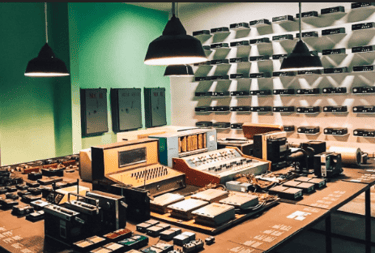

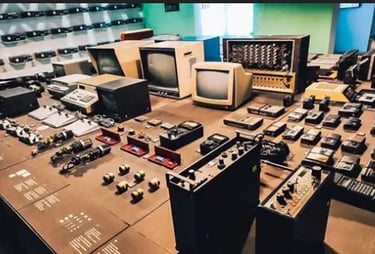

Enver Hoxha
(1908-1985)
How many of these devices do you recognize?
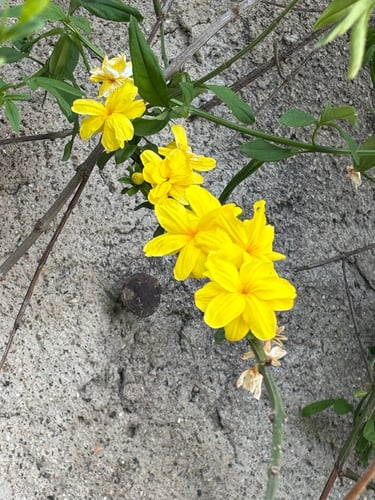

The fact that we see dozens each day that must have lived through Albania’s dark period and carry the scars inside and out yet still smile and venture out each evening to socialize with others is reason to celebrate their strength. And do they ever! The traditional kiss on each cheek when they meet. Possibly a glass of Raki and a game of dominoes or chess in the park for the men, and a gathering of the ladies in skirts and dresses for conversation and people watching. The children running about near the beach, some literally naked, screeching and laughing while every adult has at least one eye on them, yet allowing them freedom to be children. The young and old alike walk their promenade, park, city center, public square, etc. This begins each evening just prior to sundown and continues well into the night. It is known as Xhiro. They pause, embrace or shake hands, and chat. Some just walk and talk with their partner, but they are always out there. Every night. Living a life most Westerners would be envious of after many had to live a life hidden behind a cruel dictatorship we cannot fathom. They are a flower that has grown from the crack in a stone wall.
